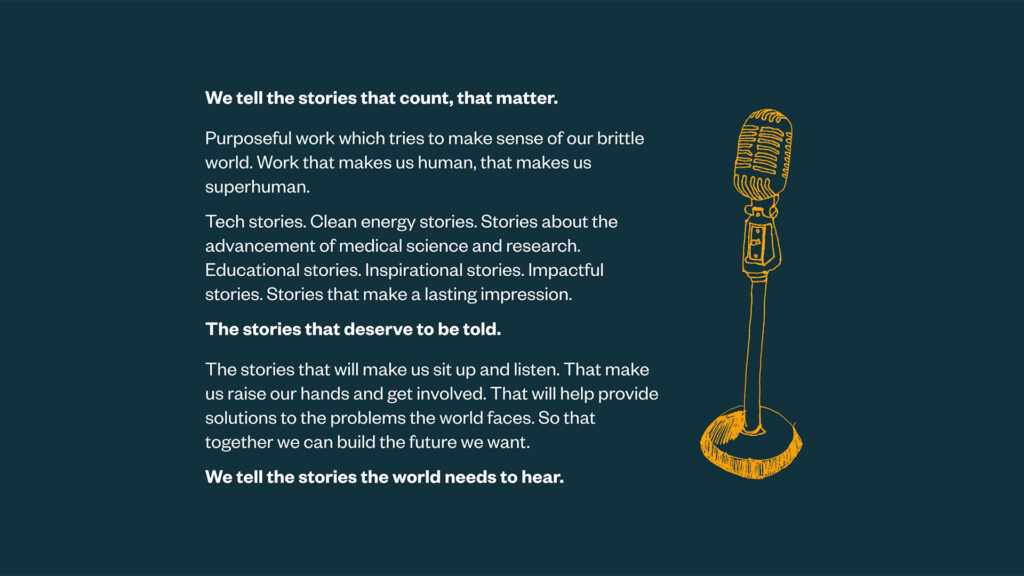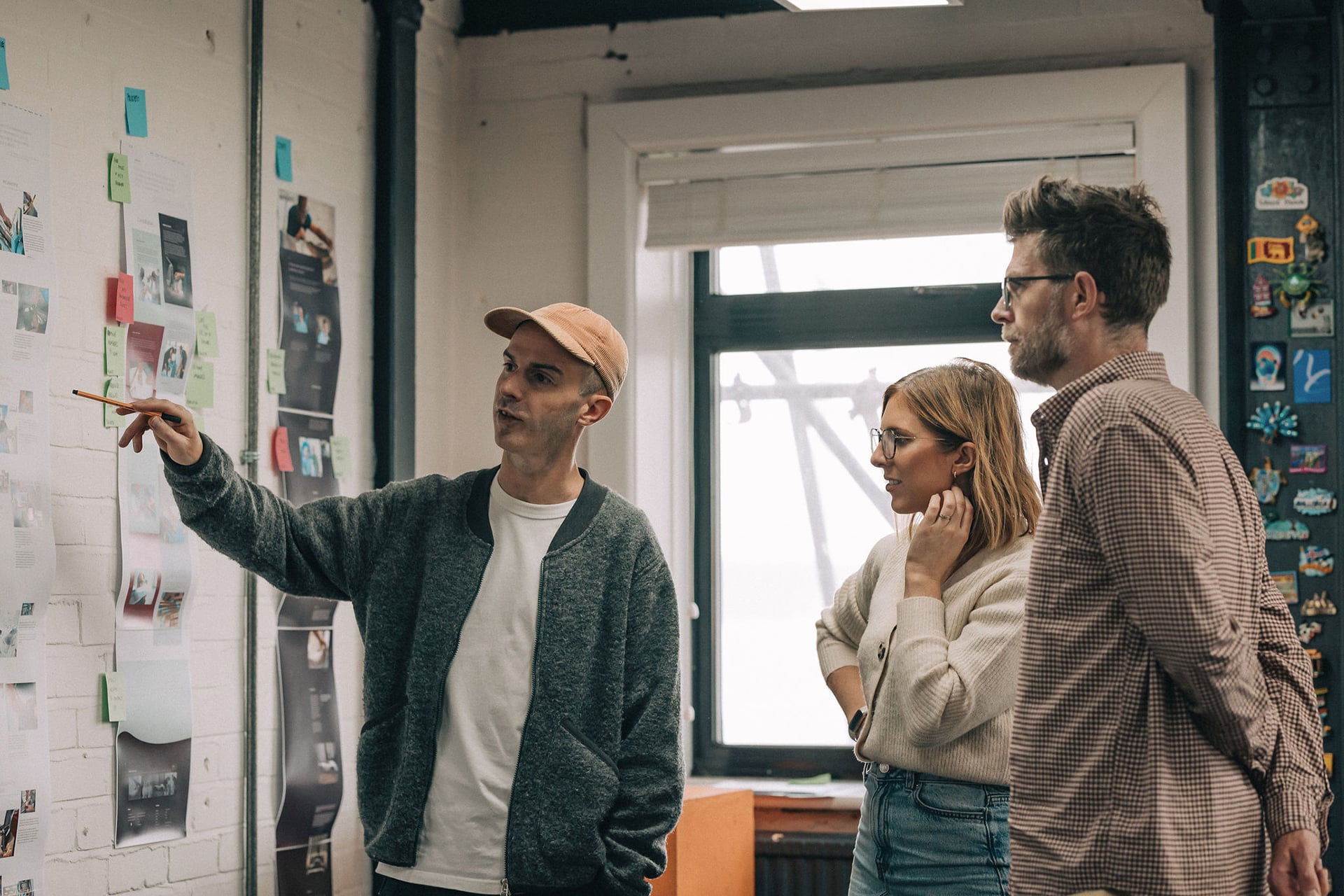How to navigate the AI hype and develop smart brand strategies
The hype around AI feels all-consuming. Every conference, every LinkedIn post, all promising transformation at varying degrees. But beneath the noise, there's a quieter, more important conversation happening about what AI actually means for brand work.

Nearly everyone’s using it now; for copy, for content, for brand messaging. And increasingly, it all sounds the same.
You’ve likely noticed it. That distinctly smooth, optimistic, slightly corporate tone that’s permeated websites, social posts, and even creative briefs. Your customers notice it too. When every brand sounds like it emerged from the same algorithmic copywriter, none of them stand out.
Smart brand strategy does not mean abandoning AI altogether. Rather, it’s about cutting through the hype to understand what AI can and cannot do, and where human thinking remains irreplaceable.
The temptation (and the trap)
The promise is seductive. Writer’s block eliminated. Content calendars populated in minutes. Five headline variations before you’ve finished your coffee.
AI does deliver on some of this. It’s genuinely useful for breaking through blank page paralysis, generating variations, and accelerating the mechanical aspects of creative work.
But here’s what the AI pitch doesn’t reveal: it doesn’t always tell the truth. It lacks nuance. And most critically, it strips away what makes your brand distinctly yours.
The epidemic of generic tone isn’t merely disappointing – it’s actively eroding brand authenticity. When your copy could have been written for any business in your sector, you’ve lost the thing that makes people choose you over the competition.
Synthesisers vs creators
Here’s a useful reframe: AI synthesises existing patterns. Humans create new ones.

AI analyses what’s worked before. It spots trends, identifies structures, and remixes successful formulas. It excels at pattern recognition because that’s fundamentally what it does – it predicts the next most likely word based on everything it’s been trained on.
But only humans understand why something worked. Only humans push boundaries, break patterns deliberately, and take creative risks that don’t yet exist in any dataset.
Like your use of AI, your brand needs both capabilities. The order matters.
Making AI a human process
This is where strategy and AI intersect.
“The key is treating AI outputs as raw material, not finished work. That distinction changes everything.”
Use AI to break through resistance. Let it generate initial drafts, offer variations, and accelerate the mechanical work. But then – and this is where craft becomes critical – infuse it with personality. Layer in nuance. Add the insight that only comes from genuinely understanding your brand, your audience, and the truth you’re trying to articulate.
The strongest brands aren’t avoiding AI. They’re using it deliberately, as one tool within a larger creative process that remains human-led.
Opportunities vs limitations
AI accelerates research and initial drafts. It generates variations for testing.
But it cannot capture your brand’s authentic voice without extensive training, and even then, it lacks original thought. It misses cultural context and those subtle emotional resonances that make messaging land. Let’s be honest, do we really think AI could ever capture the cheeky tone of Innocent Smoothies? Or create compelling, emotive copy required by charities like Macmillan?

It’s often confidently incorrect – hallucinations aren’t edge cases, they’re inherent to how the technology functions. And it doesn’t understand your specific audience’s pain points unless you’ve already done the foundational strategic work.
These limitations aren’t minor technical issues. They’re fundamental to how the technology operates. Human oversight isn’t optional. It’s essential.
The authenticity question
In a world where everyone has access to the same AI tools, authenticity becomes your competitive advantage.
Your competitors can generate the same smooth copy, the same upbeat tone, the same solutions-focused messaging. So can you. So can everyone.
“What they cannot replicate is your actual story. Your genuine expertise. The specific lens through which you see your industry’s challenges. The human journey that brought you here.”
Maintaining authenticity in the age of AI requires human oversight as the entire point, not merely a final check. Your brand story, values and voice should inform AI, not be replaced by it. Real expertise and strategic thinking matter more than ever.
When everyone’s equipped with the same tools, craft and strategy become the differentiators.
What this means for your brand
Smart brand strategy in the age of AI starts with an honest assessment, not blind adoption.
Start by auditing your current AI use. Where is it genuinely helping, and where is it homogenising your voice? If you cannot distinguish your content from your competitor’s, that’s a signal worth heeding.
Invest in defining your true brand voice. Not the aspirational version, but the authentic one you actually possess. AI can enhance a distinctive voice if you’ve articulated it clearly. It cannot create distinctiveness from nothing.
Partner with people who understand both the potential and the pitfalls. Smart brand strategy isn’t about rejecting new tools. It’s about deploying them intelligently, in service of something larger.
The human touch
AI can generate a thousand stories in an instant. It cannot live one. It cannot tell the stories that humans share over glasses of wine or with their partner after a long day. It can’t recall the nostalgia brought on by places and spaces. It can only replicate what you’ve already told it.
That’s what we bring to brand work. The understanding that comes from unexpected paths. The strategic clarity that emerges from years of practice, not from pattern recognition alone. The creative instinct that knows when to break the pattern entirely.
We use AI. But we use it as raw material for human creativity, not a replacement for it. We use it to accelerate the process, not to bypass the thinking that makes work meaningful.
If you’re looking for a partner who understands how to use AI as a tool rather than a crutch – who can help you define and protect what makes your brand authentically yours – let’s talk about your next project.
The brands that succeed won’t be the ones with the most sophisticated prompts. They’ll be the ones who never forgot what makes them human in the first place.





